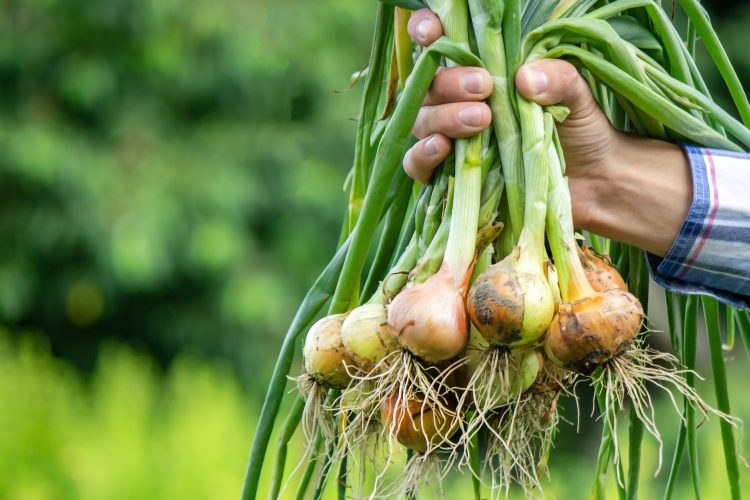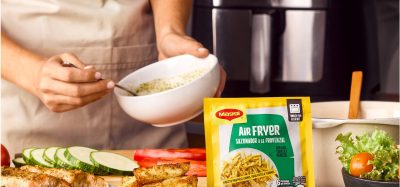$5.2 million grant awarded for onion harvest research
- Like
- Digg
- Del
- Tumblr
- VKontakte
- Buffer
- Love This
- Odnoklassniki
- Meneame
- Blogger
- Amazon
- Yahoo Mail
- Gmail
- AOL
- Newsvine
- HackerNews
- Evernote
- MySpace
- Mail.ru
- Viadeo
- Line
- Comments
- Yummly
- SMS
- Viber
- Telegram
- Subscribe
- Skype
- Facebook Messenger
- Kakao
- LiveJournal
- Yammer
- Edgar
- Fintel
- Mix
- Instapaper
- Copy Link
Posted: 11 January 2024 | Grace Galler | No comments yet
A National Institute of Food and Agriculture-funded project is set to research multiple aspects of the southern US onion harvest system.


Texas A&M AgriLife Research has been awarded a $5.2 million grant to investigate multiple aspects of successful short-day onion production.
The National Institute of Food and Agriculture-funded project is set to research various aspects of the southern US onion harvest system, with Subas Malla, Ph.D., Texas A&M AgriLife Research Associate Professor at the Texas A&M AgriLife Research and Extension Center in Uvalde, serving as Director for the short-day onion project.
The wider Texas A&M AgriLife team is comprised of Stephen Searcy, Ph.D., Professor Emeritus and former head of the Department of Biological and Agricultural Engineering, Bryan-College Station; Juan Anciso, Ph.D., professor and Texas A&M AgriLife Extension Service vegetable specialist, Weslaco; Francisco Abello, Ph.D., Assistant Professor and AgriLife Extension Economist – Management, Vernon; and Larry Stein, Ph.D., professor, Regents Fellow and associate Head of the Department of Horticultural Sciences, Uvalde. The University of California, the University of Georgia and New Mexico State University will also partner on the project.
“The goal of this proposal is to improve profitability and ultimately market share for short-day onions by mechanizing short-day onion harvesting,” explained Malla.
“We intend to do this through development and selection of cultivars, optimization of production practices, improved harvest systems, and communication of the associated socioeconomic benefits to growers and packers,” he continued.
The need for research
Currently, the majority of onions grown across the southern region of the US are short-day onions which require about 10-12 hours of daylight to produce bulbs. Meanwhile long-day onions require 14-16 hours.
Back in 2023, the fresh market onion industry grew a total of 75,460 tons across 7,158 acres in 35 South Texas counties. According to South Texas Growers Inc, a wholesale nursery, last year the state’s fresh market onion industry (sweet, yellow, red and white onions combined) grew a total of 75,460 tons across 7,158 acres in the 35 South Texas counties, with the average farm-gate value of these onions sitting at around $39 million.
According to the researchers, short-day onions are a high-value vegetable crop in many southern US states, including Texas, but their biology and structure present some difficulties, especially during harvest.
“Onion harvesters developed for long-day onions in northern states have been tested with short-day onions but growers judged the results to be less than satisfactory,” explained Searcy.
“Dry matter content in the short-day sweet onion is low but the water content is high. Due to the high water content in the bulb, there is a greater likelihood of bruise damage since the bulbs can’t withstand a higher-pressure impact when harvested. That is why short-day onions have traditionally been harvested by hand,” Malla continued.
When utilising mechanised harvesting, “too many bulbs were damaged to be acceptable for the fresh market”, according to reports.
“However, these past attempts were limited to substituting the mechanical harvester for manual labor and did not involve a whole-system approach,” said Malla.
The latest National Institute of Food and Agriculture-funded project is aimed at mechanising harvest will involve the whole system and include short-day onion areas in Georgia, Texas, New Mexico and California to represent a full range of growing conditions.
“Limited availability and increasing cost of labour has resulted in decreased US short-day onion production and a lack of competitiveness with foreign sources. A viable mechanized harvest system is a high priority for growers and the industry,” continued Malla.
Key areas of focus
Sharing the key areas of focus for the project, the researchers listed various facets of developing a successful harvest system. These include:
- Identifying cultivars and production practices suitable for mechanical harvesting.
- Modifying the harvest system to minimize the potential damage to onion bulbs.
- Evaluating the influence of mechanical harvest on profitability and risk faced by onion growers.
- Communicating the benefits and drawbacks of adopting mechanical harvesting to growers.
Going forward, Malla noted that the adoption of any advances by growers will “rely on partnerships with equipment manufacturers, seed companies and technology providers”.
A stakeholder advisory panel and scientific advisers are set to participate in the project’s proposed research and outreach activities.
“We are already in the process of evaluating diverse Texas A&M onion germplasm to understand the genetic mechanism of host resistance against diseases and insects. We are working with the Texas A&M Vegetable and Fruit Improvement Center to test bulb quality and storability in onions. We are also testing Texas A&M onion germplasm in a way that will help shorten the cultivar development cycle,” continued Malla.
“Our ultimate goal is identifying the best cultivars and improving the short-day onion harvest system in a way that provides better results and better profitability for the producer.”
Related topics
Equipment, Food Safety, Research & development, Supply chain, Trade & Economy, World Food
Related organisations
National Institute of Food and Agriculture, Texas A&M AgriLife, University of California, University of Georgia









